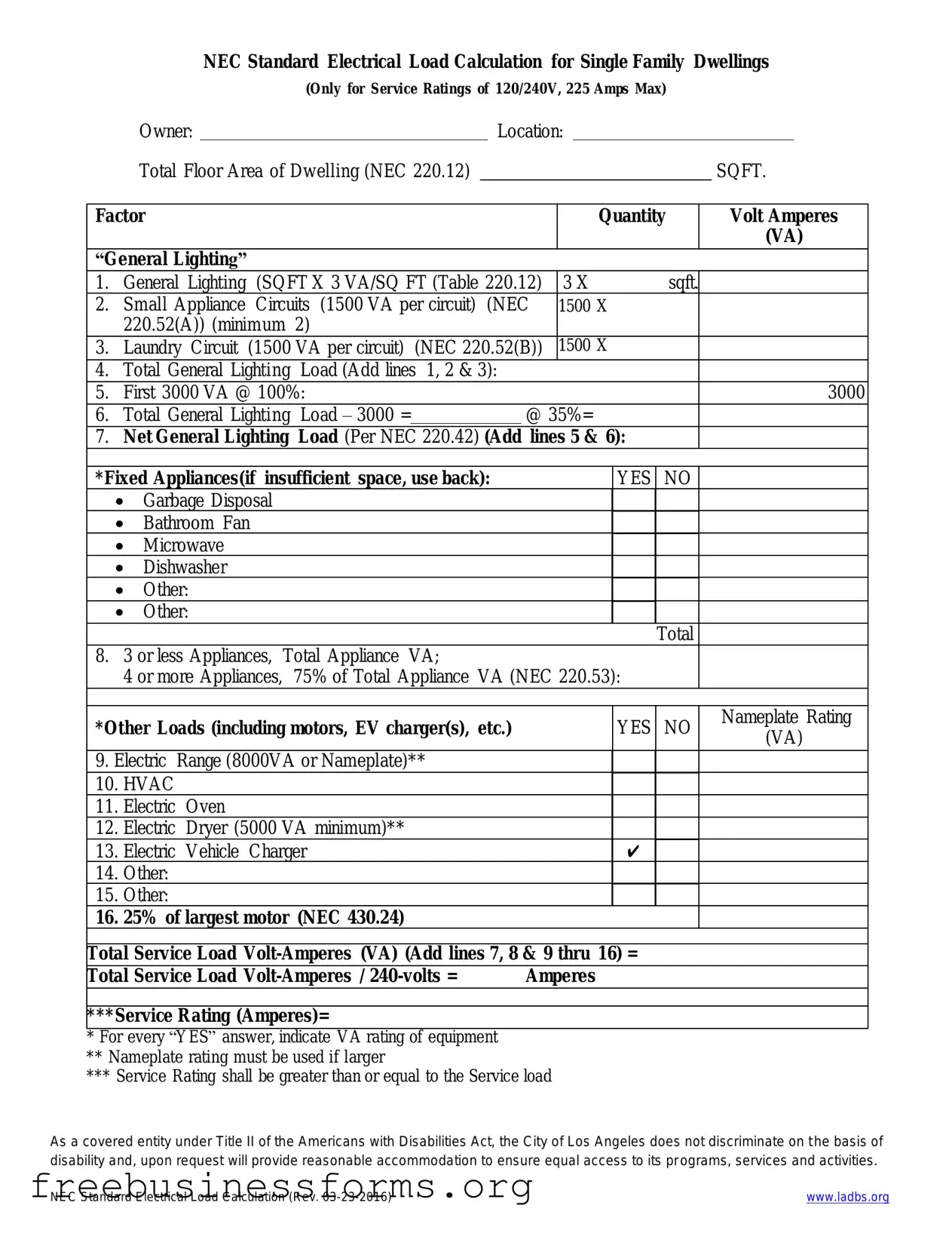Official LADBS NEC Standard Electrical Load Calculation Form in PDF
The LADBS NEC Standard Electrical Load Calculation form is a crucial document used for determining the electrical load requirements for residential and commercial buildings in Los Angeles. This form helps ensure that electrical systems are designed to meet safety standards and accommodate the anticipated energy usage. Understanding how to properly complete this form is essential for compliance with local regulations and for the overall efficiency of electrical installations.
Open Form Here

